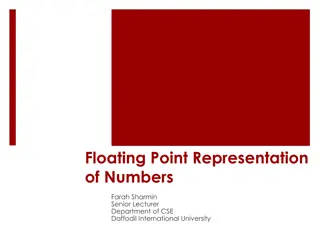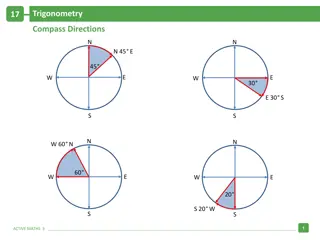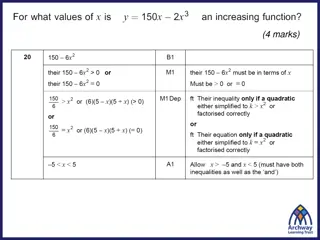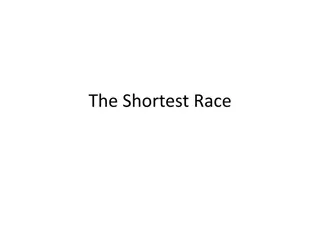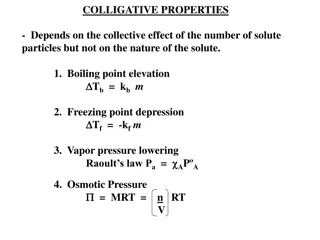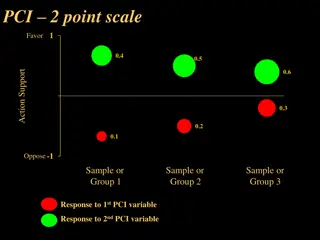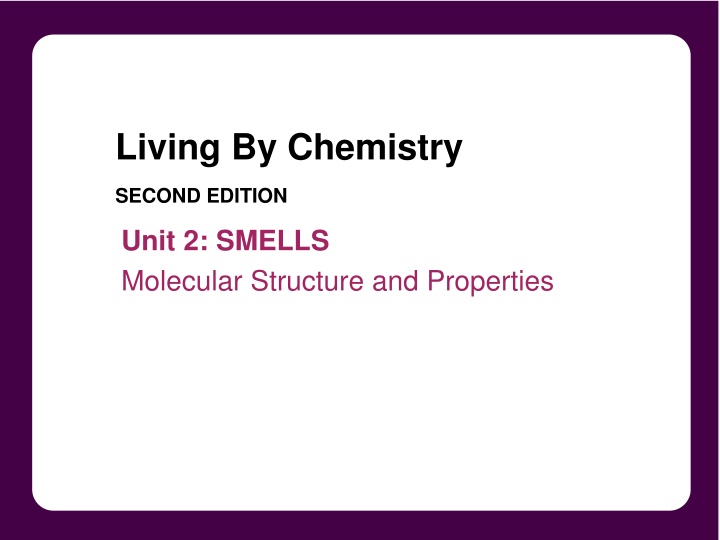
Smells: Molecular Structure and Properties in Chemistry
Dive into the connections between molecular structure and smell in chemistry with this comprehensive guide exploring the prediction of smells for various compounds based on molecular formulas, chemical names, structures, and shapes.
Download Presentation

Please find below an Image/Link to download the presentation.
The content on the website is provided AS IS for your information and personal use only. It may not be sold, licensed, or shared on other websites without obtaining consent from the author. If you encounter any issues during the download, it is possible that the publisher has removed the file from their server.
You are allowed to download the files provided on this website for personal or commercial use, subject to the condition that they are used lawfully. All files are the property of their respective owners.
The content on the website is provided AS IS for your information and personal use only. It may not be sold, licensed, or shared on other websites without obtaining consent from the author.
E N D
Presentation Transcript
Living By Chemistry SECOND EDITION Unit 2: SMELLS Molecular Structure and Properties
Lesson 40: Sorting It Out Shape and Smell
ChemCatalyst What smell or smells do you predict for a compound made of molecules that are long and stringy in shape? What is your reasoning?
Key Question What chemical information is most useful in predicting the smell of a compound?
You will be able to: summarize the various connections explored so far between molecular structure and smell predict smells of a wide variety of compounds by examining molecular formulas, chemical names, molecular structures, and molecular shapes
Prepare for the Activity Work in groups of four.
Discussion Notes In each smell category, it is possible to find one distinctive feature that sets that group apart from the other smell categories. How do we need to revise the Smells Summary Chart to bring it up to date?
Wrap Up What chemical information is most useful in predicting the smell of a compound? Molecular shape can be useful in predicting smells for sweet-, minty-, and camphor-smelling compounds. Amines and carboxylic acids have distinctive smells. For stringy and frying-pan shaped compounds, it is necessary to look at functional group as well as molecular shape in order to determine smell.
Check-In If a compound is sweet smelling, what other things do you know about it? List at least three things that are probably true.





